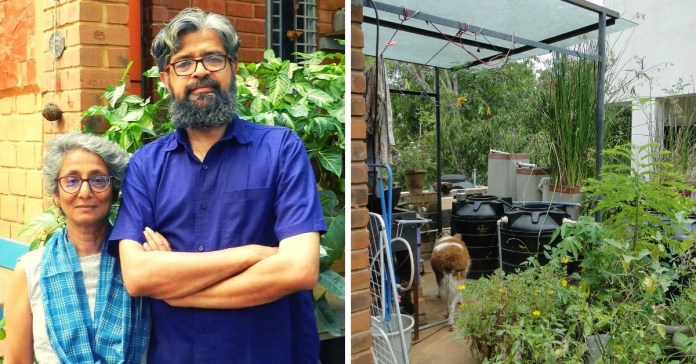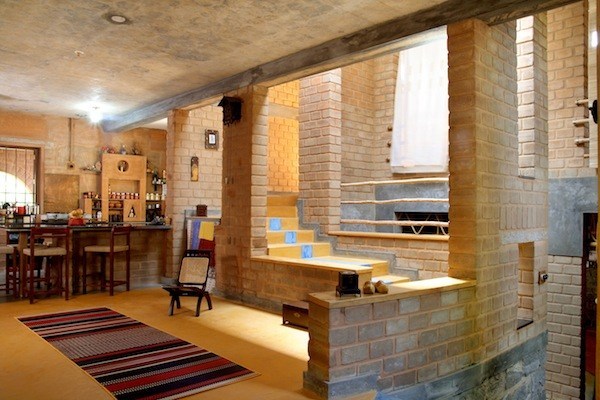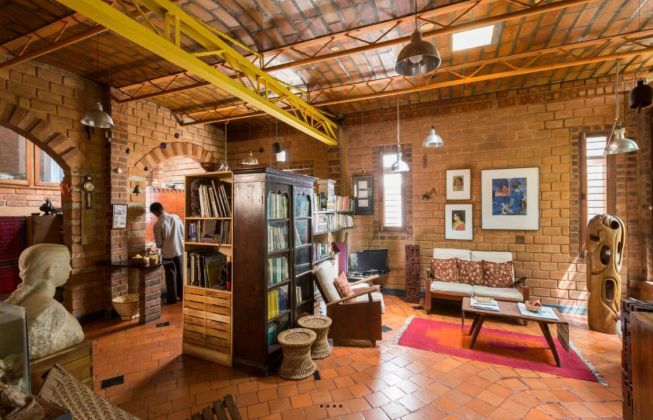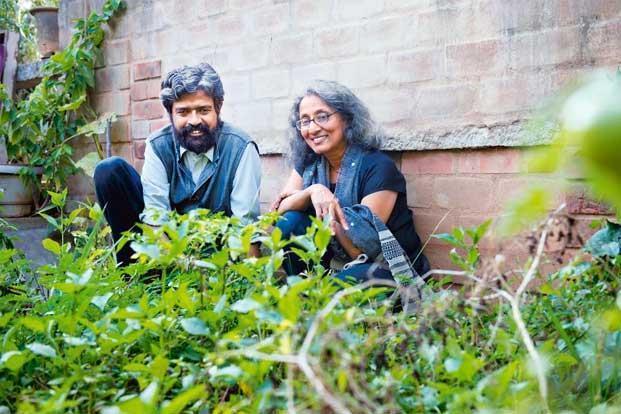
Vishwanath is a Civil Engineer and Urban and Regional Planner whereas his wife Chitra is an architect by profession. Together this couple has shown how the intention to improve and bring a transformation in your surroundings can really help to reach the goal.
And when they were forced to face water crisis due to floods in their house on a rainy day and call tankers for drinking water, their intention to have an eco-friendly abode became their goal.
With the professional background the duo has, it was not much difficult to plan out a sustainable design that would require the least use of natural resources such as water, energy, and materials.
In the early part of the 1990s when this couple was on a hunt for a home in Bengaluru they were more sort of intending to have an eco-friendly nest.
Natural Elements & Color Zones That Control Temperature
The house of Vishwanath and Chitra is made from stabilized, compressed earth blocks that were excavated from the site. The two-storeyed house has a white-painted section that ensures pleasant weather all the time whereas the yellow section just after a few steps has a bit high temperature.
The roof of this part is covered with sheets prepared from the agricultural waste to keep the room cool. To ensure adequate natural light and air, they have given emphasis on open arches in place of the doors whereas the indoor air is maintained cool even during the hottest days through the basement windows at the ground level.

A House With No Fans Or Air Conditioners
From the outside, the house looks like any conventional construction but it relies mostly on the natural ventilation system for maintaining the temperature inside. There are no air conditioners or fans and the only table fan is used that too for their dog.
While discussing how open arches help in maintaining regular air flow Vishwanath said, “The arch distributes the weight of the roof to the walls, cutting down the use of concrete and cement. Arches also ensure continuity of air flow, eliminating the need for more doors or walls in the house.”
The couple uses solar energy to power their house so that the electricity bills are almost ¼th as compared to other regular homes. The biomass heater serves as a backup for cooking and heating water.

Saving Water Through Rain Water Harvesting
Both S Vishwanath and Chitra follow some simple environment-friendly features that are sustainable as well as cost-effective. The most prominent ones include rainwater harvesting, use of composting toilet, and organic gardening.
Rain Water Harvesting is carried out by collecting water coming from the rooftop and storing it. This helps the couple save 1 lakh liters of water every year and use it for washing clothes and bathing.
They use the water coming from the clean catchment areas through the staircase room for drinking and cooking purposes. Water in the underground tank that every Bengaluru household has is used for other different purposes.
Another highlight is a recharge well placed outside their house and is connected to a stormwater drain. The well recharges from the neighboring areas and the ground and collects around 1 million liters of water annually.
Vishwanath says, “It collects rainwater from the ground and overflow from the sump tanks. The layers of sand and grain in the ground act a natural filter and preserve the depleting groundwater tables.” Incidentally, this rain harvesting activity ensures that the couple has to pay zero water bill for at least 8 to 10 months of every year.

The Eco-friendly Composting Toilet
This particular toilet does not require water and the waste collected is covered with ash after every use. The microbes on the toilet surface convert it into manure in a very short period which is used for maintaining the rooftop garden. The house of Vishwanath and Chitra has two such toilets.
Organic Produce on Rooftop
The couple grows almost all types of produce from leafy vegetables, fruits to millets and rice using organic manure on their rooftop. They use grey water which is the leftover water from washing and bathing for watering their plants. Apart from attracting insects that keep the soil on the rooftop healthy for cultivation, the rooftop garden also keeps the house cool.
They also have an organic waste converter near the creepers that converts kitchen waste into organic manure on a daily basis.
So a little idea, a lot of hard work and basically the intention to bring a change for the better can really go a long way in helping you connect with nature and ensure pollution-free surroundings and cut down dependability on natural resources.
Article Credit: MetroSaga
